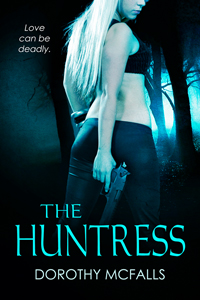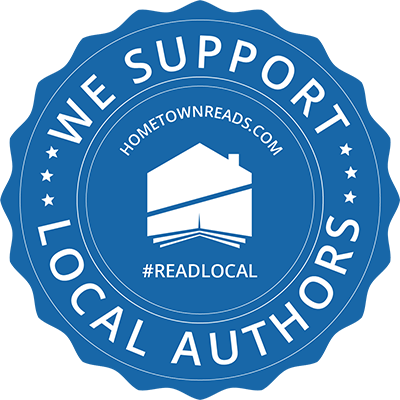Join us on Wednesday, July 18th for our interview with Wisconsin author, Lorrie Kruse!
Author: Written Dreams
Revising Your Novel
E. Tip of the Day: During the revision process when you are first starting to re-read your story think of yourself as the reader not the writer of the story. Read the sentences out loud if you need to pretend you’re reading the story to someone else. When you find yourself stumbling over words in a sentence having to re-read it a second or a third time, that’s probably a good indication it needs to be revised. 🙂
Another tip: put the story down for a few weeks after you’ve finished writing the first draft, and then again for a few weeks after revising the 2nd draft. You’ll have a more objective outlook and be able to tackle the story with renewed energy adding those important details you may have missed while writing the first draft.
Wednesday’s Writers Guest Blogger Dorothy McFalls!
We’re so excited to have Dorothy McFalls as our guest today! 🙂 Dorothy, thank you, for sharing these wonderful tips on writing a great synopsis with us.

Dorothy St. James is the author of the White House Gardener Mystery series for Berkley Prime Crime. The Scarlet Pepper, the second book in the series, was released in April 2012. Dorothy also writes romance as Dorothy McFalls. The Huntress, an independently-published kick-ass romantic suspense, recently climbed the Amazon bestseller list, hitting #4 in romantic suspense. You can find Dorothy at www.DorothyStJames.com or www.DorothyMcFalls.com or on Facebook (www.facebook.com/dorothystjames) or on Twitter (@DorothyStJames). Other books by Dorothy McFalls include The Nude, The Marriage List, A Wizard For Christmas, and Neptune’s Lair. Visit Dorothy’s website to see a complete list of her novels.
A couple of weeks ago I was invited to attend an impromptu writing retreat with three other amazing authors. One of those authors also happens to be an acquiring editor. As we were talking, she mentioned how surprised she was at the poor quality of many of the synopses she receives with the submissions. She couldn’t understand why authors didn’t spend more time on writing a synopsis when it is one of the major elements editorial staffs look at when deciding whether to buy a project or not.
I have to admit that I used to struggle with writing a synopsis. The end result was often dull. Flat. And it, quite frankly, bored me to death. That was before I learned what I was doing wrong.
Your synopsis is not a summary of your book. Yes, the synopsis should contain a beginning, middle, and end. But don’t simply state what happened in your story. Don’t write an outline. First, that’s boring. Second, it doesn’t demonstrate to the editor how incredibly talented you are.
Your synopsis is an advertising tool to sell your book. This is especially true if you are hoping to sell on proposal (in other words—convince a publisher to pay you money for a book you haven’t yet written.)
Not only should the synopsis tell the editor about your book, you also want it to:
- showcase your unique voice,
- represent the genre you are writing, and
- make the editor excited about the story (so she buys it!)
The synopsis should match the tone of your book. If you’re writing a comedy, make the synopsis funny. If it’s a thriller, write it so the editor is on the edge of her seat when she’s reading the synopsis. If it’s a sexy romance, make the synopsis sexy. Let the editor know when the hero and heroine kiss and more. (I was forever leaving out the first kiss and deepening relationship details in my synopses for my romance novels. And, consequently, I didn’t sell a book until a writer friend insisted I add that to my synopsis. Remember: the synopsis is a tool for selling your book.)
Most novels are written using a three-act structure (whether the author knows she’s doing it or not.) So why not use the three-act structure to write your synopsis?
Act 1: The Beginning:
Just like in your book, start with an interesting hook. For my latest cozy mystery release, The Scarlet Pepper (a book that sold based on its synopsis), I opened the synopsis with:
Someone is tampering with the Presidential vegetable garden, and Casey Calhoun, organic gardener for the White House, is determined to track down the garden prankster. Red peppers are growing instead of the green ones that had been planted. There’s cabbage where the First Lady’s favorite variety of lettuce should be. And all the tomato plants are gone.
From this opening paragraph you know (1) who the main character is, (2) there’s a mystery to be solved, and (3) that the story will be light-hearted in tone.
Because your synopsis isn’t a summary or outline of the book, it doesn’t have to open where the book opens. Open the synopsis by introducing your main characters and the story problem.
Act 2: The Middle:
What are the major turning points in your story? What problems does your hapless hero face as he tries to win the heroine’s heart? How do matters get progressively worse as your amateur sleuth works to solve the murder? All of these things happen in the middle of your story. In your synopsis, you want to describe the obstacles your main character faces…and how things get worse.
If necessary, the middle is also where you would introduce subplots. For example, if you’re writing a mystery and there’s a romance subplot, you would want to introduce the subplot in this part of the synopsis. But I caution you to be extremely selective with subplots. You want a lean, fast-reading synopsis that catches the editor’s attention. Many subplots, while interesting in the book, will slow the action in your synopsis. When in doubt, leave it out.
Act 3: The End:
Don’t leave this part out! The editor wants to know you’ve written a complete story. She needs to know if the story fulfills its promise to the reader. She can’t know you’ve done your job if you don’t tell her how your book will end.
If you’re writing a romance, tell how the hero and heroine find their happily ever after. If you’re writing a mystery, tell how the mystery will be solved and the bad guys get caught. If you’re writing an emotional women’s fiction novel, show the conclusion of the main character’s emotional arc.
If you include subplots within your synopsis, be sure they are wrapped up at the ending as well.
Final Thoughts:
- Don’t forget to show/tell how the main character grows and changes over the course of the story.
- Leave out minor characters and most sub-plots. Give the editor what she needs to know and nothing else.
- Keep it short. Most editors want 3 to 5 page synopses. That said, every publisher is different. Check the publisher website to see if they’ve posted guidelines for what they want in the synopsis.
- Always write the synopsis in present tense.
- For guidance in developing a tight plot, I highly recommend Blake Snyder’s screenwriting book Save the Cat and his Beat Sheet (http://www.blakesnyder.com/tools/)
Now, go write that synopsis and sell that book!
And writers, if you still need help after you’ve followed these tips, Written Dreams offers editing services for writing synopses and query letters. See our Services Page on our website for details. https://writtendreams.com/Services.html We’re happy to help in any way we can. 🙂
Thank you, Dorothy, for the terrific advice! She will be with us all day so feel free to ask Dorothy questions or make a comment on the post. Thank you! 🙂
Don’t Be Afraid to Say Hi
E. Tip of the Day: Writing is a business of friends and relationships.
Before I started Written Dreams, I worked at Tekno Books for Marty Greenberg. One of Marty’s best friends was Isaac Asimov. Yes, that Isaac. The one and only. 🙂 I never had a chance to meet Isaac personally. He passed before I started working for Marty. But I had read short stories and books written by Isaac. Who hadn’t? They were so entertaining.
After all the work was done for the day, Marty would occasionally tell me stories about Isaac. Fond memories he had of the man he didn’t want to ever forget. But that was Marty. He had such respect for other people in the business. He knew how important it was to treat others the way he wanted to be treated. Marty always treated me with respect. He was an old-fashioned gentleman and generous of heart. He was very well-liked in the business, and an advocate for the underdog. Some say he was a prince among men. To me, he was a wonderful role model.
I made many wonderful friends while I was at Tekno. Dorothy McFalls was one of those amazing people. She and I just clicked. I believed in her writing wholeheartedly. We worked on her novel, The Nude together. One project turned into two, and so on. We became close friends. And like a good friend will, she encouraged me to go after my dreams. Thank you, Dorothy. I will forever be thankful for that support. 🙂
So, the next time you’re at a convention, don’t be afraid to say hi to someone you don’t know. They just might turn out to be the next Isaac Asimov or Dorothy McFalls. 🙂
Learning From the Pros Upcoming Guest Bloggers
Would you like to learn about writing from the pros? Mark your calendars for these upcoming Wednesdays! 🙂
Join us next Wednesday, July 11th when my good friend, author Dorothy McFalls aka Dorothy St. James, stops in to give advice on how to write a great synopsis.
Next, author Lorrie Kruse will be stopping in on July 18th to share news with us on her new release.
Lily Silver, author of Dark Hero, will be visiting July 25th, and answering questions on self-publishing.
And August 1st, we’ll have an interview with the one and only Jim C. Hines.
Happy Independence Day!
Written Dreams would like to wish everyone a safe and happy holiday!
While you’re watching the fireworks tonight, take a deep breath and feel all the emotions of the moment. Close your eyes and listen to the loud booms and zips. Feel the mosquitoes nipping at your skin. Open your eyes to see the bright reds, blues, and whites sparkling in the sky. Smell the savory burgers cooking on the grill mixed in with the sulfuric scent of gun powder, or taste that tangy potato salad.
So, the next time you’re writing a scene with fireworks in mind you’ll have all those senses and feelings at your fingertips. 🙂
Brenda’s Tangy Potato Salad
This is an old family recipe. Most potato salads use a yellow mustard. My family uses French Dressing for a sweeter, tangier salad.
INGREDIENTS:
3 lbs. Red Potatoes with peeling on, sliced after boil
4 Large Hard-Boiled Eggs, sliced
10 Radishes, sliced
2 Cucumbers, diced (I peel the cucumbers.)
1 Green Pepper, diced
1 bunch of Scallions/Green Onions, sliced
1-3 Tablespoons of French Dressing (to taste)
1/2-3/4 cup of Mayonnaise (to taste)
salt and pepper (to taste)
DIRECTIONS:
Boil the potatoes until soft. I add a few shakes of salt and pepper to the water.
In the meantime, prepare the rest of the ingredients by washing the vegetables and slicing/dicing them. Place the sliced veggies in a large bowl.
When the potatoes are soft, slice and place in another large bowl to cool in fridge for 5-10 minutes.
While the potatoes cool, make the dressing. Combine mayo and French dressing together in a small bowl with salt and pepper. When you like the taste of the dressing, (some prefer less sweet to more sweet) combine with the bowl of cooled potatoes.
Add the bowl of diced/sliced veggies to the potato salad and stir until well combined. Place in the fridge until ready to serve.
Enjoy!
Your Own Fantasy Gone Wrong
E. Tip of the Day: Once upon a time I edited an anthology with Marty Greenberg entitled Fantasy Gone Wrong published by DAW Books. The anthology centered around what else–fantasies gone wrong. The theme challenged authors to think outside the box of the usual ending and the stories turned out beautifully. Fun, humorous, and entertaining! I really enjoyed the process of working on this anthology.
Today’s E. Tip focuses on two tips.
1) If you want to stay current with the genre you’re writing for and don’t have a lot of spare time to do it, read short stories. Just do a search of Anthologies in a particular genre. You’ll be able to choose from lots of selections.
2) If you’d like to try your own hand at writing a fantasy gone wrong story, take a nursery rhyme and put your own spin on it. Do something different with that story you’ve never seen before. Instead of taking it into the fantasy genre, make it contemporary or add some science fiction elements to it. Get your creative juices flowing. You might be surprised with the results! 🙂
A New Month
E. Tip of the Day: Everyone needs to start fresh once in a while, and the new year is a great time to do it. But for some of us, we need to do a re-start every once in a while throughout the year to recharge our batteries.
The beginning of a new month is a perfect opportunity to re-establish your writing goals. Take a look at your calendar, add major events–a wedding for instance–and deduct time that you will spend away from writing, including your day job if you have one.Then take a look at every day of the week and determine how much time you will in reality have to write. (This is important. It will help you take your writing serious.) It’s okay if you only have 30 minutes a day, as long as you try to set aside time every day. The chart may look like this. Good luck!
| Sunday | Monday | Tuesday | Wednesday | Thursday | Friday | Saturday |
| 3 hours | 2 hours | 2 hours | 1 hour | 2 hours | 1 hour | 1/2 hour |
An Easy 2000 Words
E. Tip of the Day: Sometimes it’s good to take a break from writing. Relax over the weekend, if you’re not on deadline for a project, and come Monday have a plan to write 2000+ words on your current project.
Just keep telling yourself you can do it, and when Monday comes that 2000 words will write itself. 🙂





